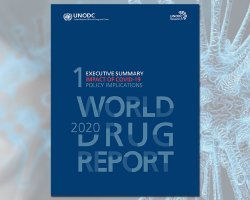Meth: The Biggest Problem Drug for Arkansas

Arkansas is a very rural state with widely scattered population centers. Fort Smith to the west, Fayetteville and Rogers in the northwest, and of course, Little Rock in the center have the greatest density of residents. The rest of the state is mostly farmland or forest. But these remote areas permit the infiltration of four Mexican drug cartels who bring addictive, deadly substances into the state.
The Sinaloa cartel, Los Caballeros Templarios, Cartel Jalisco Nueva Generación and Los Zetas all operate in Arkansas. The Interstate system not only expedites travel and shipping, it also enables cartels to move their shipments throughout the state and to other states.
Methamphetamine is the most problematic drug in the state. It sends almost as many people to rehab as alcohol. After that, the number of people going to rehab for marijuana is tied with prescription opioids. There’s a diminishing problem with cocaine and very few heroin admissions.
Narconon Rehabilitation is Within Easy Reach
For families or individuals looking for a solution, the Narconon drug rehab program not far away. Just a short distance into Oklahoma lies Narconon Arrowhead. This large rehab center situated within a state park has room for many Arkansans seeking sobriety. And to the south near Baton Rouge, Narconon New Life Retreat guides many through the recovery process.
At these centers, a person is not sent home when a 30-day limit has been reached. What is really important is whether or not a person has the skills to stay sober. At Narconon centers around the world, an individual graduates when he has honestly completed the steps of the program, when he has repaired much of the damage done by addiction and when he knows how to protect his sobriety. That may take one person eight weeks and it may take another person 15 weeks. The cost is the same. The goal is lasting sobriety, not profit.
Detoxification, Regaining Control, and Life Skills
There are four distinctly different phases of this program. The first is a drug-free withdrawal, which follows any medical wean down needed before beginning the program. Through the use of nutritional supplements and techniques designed to help relieve the pain and discomfort of withdrawal, the individual is assisted through this phase and is now ready to begin the remaining steps of the Narconon program. The next step is our unique sauna-based detoxification that reaches deep into fatty tissues to wash away old stored drug residues. A combination of time spent in a low-heat sauna, an exact regimen of nutritional supplements and daily exercise stimulates the body’s ability to detoxify these residues that may have been stored for years.
But when the toxins are gone, a person’s response is very often remarkable. Most report a brighter, more positive outlook and clearer thinking. Some can see colors better. Physical benefits such as more energy, smoother skin, silkier hair are also commented on. But perhaps most important of all is the number of people who say their physical cravings are reduced. Some even say they are gone.
What must happen now is that the individual must learn to resist psychological reasons they might want to use drugs. Detoxification is followed by the Objectives—a series of exercises that sharpen and brighten one’s perceptions of the real world. As one connects more immediately with the current environment, old trauma has less power and may begin to fade away.
Gradually, each person finds that they are more in control of their thoughts, decisions, and actions. Here’s why that is so important: When cravings strike, it’s like the body is compelled to make the decision to get drugs and use them. But when an individual is empowered to make his own decisions, he is much more capable of choosing to stay sober.
The Finishing Touch: Life Skills
Before going home, there are specific Life Skills a person must learn. They start with learning the difference between social and antisocial personalities and how to deal with either type. In his past, he will find antisocial types associated with his starting to use drugs or losing his self-respect. Knowing how to protect himself from antisocial types makes his sobriety stronger.
He then learns about integrity—how he lost his and how he can regain it. By practicing the principles in this course, he can find true relief from the losses and pain of the past.
Finally, he learns how to face and overcome obstacles, problems, and upsets. At one time, situations like these may have knocked him off his sobriety. Now he learns how to improve situations in his life that may threaten his stability.

With these lessons in hand, it’s time for this student of sobriety to work out his plan for a return to a sober life. With guidance from Narconon staff, he applies what he learned to the life he left behind. By staying in contact with Narconon staff over the next couple of years, he has an excellent chance of establishing himself in a new, productive and enjoyable life.
This intensive program is why Narconon graduates generally do not need to attend meetings and why every day is not a struggle to stay sober. Many graduates find they can put the past behind them and enjoy life. No drugs are ever used as part of recovery because they simply are not needed.
Finding Rehab in Arkansas
In this state of about three million, the total number of people finding publicly-funded rehab is only 8,700 people, down from 28,000 in 2008. Chances are very good that funding for recovery has changed, not the need for drug rehab.
With two Narconon centers just a short drive or plane hop away, Arkansas has access to a drug-free, holistic approach to getting one’s life back.


 ®
®